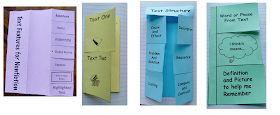Teach Comprehension Strategies
In addition to exposing young students to informational text, teachers must also teach them how to read it.
Research shows that good readers are strategic in their reading (Pressley & Afflerbach, 1995) and that explicit teaching of comprehension strategies can foster comprehension development (Duke & Pearson, 2002).
Strategies that appear to improve comprehension include monitoring students' understanding and making adjustments as needed; activating and applying relevant prior knowledge (for example, by making predictions); generating questions; thinking aloud; attending to and uncovering text structure; drawing inferences; constructing visual representations; and summarizing. With each strategy, explicit teaching should include information about what the strategy is, when it is used, how it is used, and why it is worth using.
Research suggests that teaching even one comprehension strategy can lead to improved comprehension and that teaching multiple strategies can have an even larger impact (National Reading Panel, 2000; Pressley, 2000).
I like to address these reading strategies with the interactive notebooks.
Use Informational Text for Authentic Purposes
When you read informational text, you do so for an authentic purpose—to obtain information that you want or need to know (Purcell-Gates, Duke, Hall, & Tower, 2002). This is how I like to use informational text to enhance my science lessons. I like to start with a hands-on, inquiry based lesson and then provide them with informational text that provides the answers to their questions or explains the phenomenon.
You can find this entire set of Flaps and Folds for Reading Informational Text in my store. This set includes 57 flaps and folds covering 3-6 grade standards and additional comprehension skills for reading nonfiction.
I love using Informational Text to enhance my reading strategies.
That is why I include informational text articles in almost all my science lessons and units.
Remember :
1. Inspire the students with some hands-on experience.
2. Connect the reading of informational text with a science experiment. This will give the reading purpose.
3. Teach and have students practice the strategies for Reading Informational Text. I do this with Flaps and Folds in the Interactive Notebook.
I have also created resources especially for CLOSE reading. Close Reading Life Cycle of a Butterfly
and
You will also like












